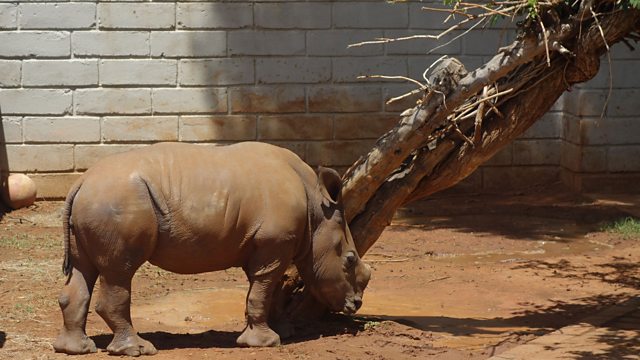The Horn Dilemma
Professor Adam Hart investigates the idea of selling harvested rhino horn in South Africa and asks whether it could help stop poaching.
The majority of white and black rhinoceros are found in South Africa. This stronghold for these magnificent creatures is now being threatened by poachers killing rhino for their horns.
Rhino horn, traded illegally in parts of Asia, is thought to be a cooling agent in traditional Chinese medicine. It's recently been hailed as a cure for cancer, and is seen as a status symbol in Vietnam. Made from keratin, the same stuff as hair or fingernails rhino horn has negligible medical properties, yet people are willing to pay up to 拢40,000 a kilogramme for it.
International trade in rhino horn has been banned under CITES (Convention on International Trade in Endangered Species) since the 1990s. Trade in horn was banned within South Africa in 2009. Since then, poaching has increased exponentially, reaching more than 1300 rhino poached in 2015.
Protecting the rhino in National and Provincial parks and privately owned reserves is a very dangerous and expensive undertaking. The government-run parks, such as Kruger National Park have about 75% of the South African rhino and are losing the most animals to poachers. The best protected rhino tend to be in the privately owned farms.
Many private rhino owners want the ban on the sale of rhino horn to be lifted.
This is because, unlike elephant ivory, pangolin scales and the bones from lions, rhinos can be dehorned without harming the animal. Many rhino owners are already removing the horns from their animals to stop them attracting poachers. So they are sitting on stockpiles of harvested horn.
With education and demand-reduction schemes not working quickly enough, rhino owners hope to satisfy the demand by legally selling their harvested horn. Some just want to trade within South Africa, while others want CITES to allow a trade agreement between South Africa and China or Vietnam. They say they would use the money earned to put back into conserving and protecting rhino.
Others worry that this would just increase demand for horn and that by making trade legal, you are encouraging people to think that it has an actual medical benefit.
It's a huge dilemma.
Producer: Fiona Roberts
Image: baby Ruby, credit Fiona Roberts
Last on
More episodes
Clip
-
![]()
The Slaughter of a Rhino
Duration: 05:42
Broadcasts
- Mon 11 Apr 2016 21:32GMT成人快手 World Service except East and Southern Africa & News Internet
- Tue 12 Apr 2016 01:32GMT成人快手 World Service Americas and the Caribbean
- Tue 12 Apr 2016 02:32GMT成人快手 World Service UK DAB/Freeview, Europe and the Middle East & Online only
- Tue 12 Apr 2016 03:32GMT成人快手 World Service South Asia, East Asia & News Internet only
- Tue 12 Apr 2016 04:32GMT成人快手 World Service Australasia
- Tue 12 Apr 2016 06:32GMT成人快手 World Service Europe and the Middle East & East and Southern Africa only
 Tue 12 Apr 2016 07:32GMT成人快手 World Service US Public Radio
Tue 12 Apr 2016 07:32GMT成人快手 World Service US Public Radio Tue 12 Apr 2016 11:32GMT成人快手 World Service ANR
Tue 12 Apr 2016 11:32GMT成人快手 World Service ANR- Tue 12 Apr 2016 14:32GMT成人快手 World Service, 成人快手 World Service Core & 成人快手 World Service US Public Radio
 Tue 12 Apr 2016 17:32GMT成人快手 World Service ANR
Tue 12 Apr 2016 17:32GMT成人快手 World Service ANR
Space
The eclipses, spacecraft and astronauts changing our view of the Universe
The Curious Cases of Rutherford and Fry
Podcast
-
![]()
Discovery
Explorations in the world of science.




